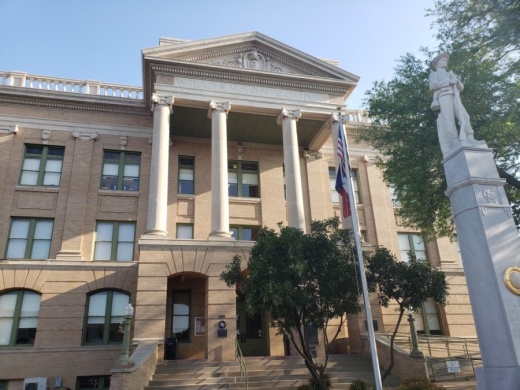Hosted by the Samuel Sanders Chapter of the United Daughters of the Confederacy, the installation event featured two prominent guest speakers: Williamson County Judge Richard Critz and Katie Daffan, the Texas state president of the United Daughters of the Confederacy. The purpose of the statue was to honor the men who stepped forward for the cause of Southern independence, the document said.
“The purpose of this occasion, more than [50] years after the war, was not to rake up the ashes of the past or to rekindle the animosity engendered during the strife, but as true sons and daughters of Confederate soldiers, to express anew the love and reverence in which the South will ever hold them,” Critz said at the ceremony. “This monument is erected to the heroism of the men who, for four years, made sacrifices, endured hardships and incurred dangers for a cause they believed to be right.”
Dannelle Houck, Williamson Museum acting executive director, said many believed the statue represents the Lost Cause of the Confederacy, also known simply as the Lost Cause, which is an interpretation of the American Civil War that seeks to present the war, from the perspective of Confederates, in the best possible terms—as a defense of a Southern way of life—according to Encyclopedia Virginia.
Only in recent years has the statue brought some controversy to the county; items calling for its removal have appeared multiple times on the Commissioners Court’s agenda since 2016, Houck said. The last time the court was approached to address the statues in an agenda item was in November 2017, when commissioners voted 4-1 to not take action on the application for the historical explanatory marker.
"I have no confidence that a plaque in it of itself will sufficiently tell the broad background of our environment," Commissioner Terry Cook said during the November 2017 meeting. "I am fine with the statue staying there, but in it of itself and by itself, it really looks around and says, 'Remember these laws were written by whites, for whites. Come on in the courthouse.' ... I will not use that side of the courthouse in any pictures that I use of the courthouse. ... I am all for trying to enlarge the picture and trying to educate how blacks felt—how Hispanics might feel today."
Former County Judge Dan Gattis said he worries a plaque may be more divisive.
"I'm really torn and on both sides, and on my vote on this; I'm asking to not be completely judged because I don't know the right solution," Gattis said at the time.
Current County Judge Bill Gravell did not immediately respond to an inquiry as to whether commissioners may take up the item again in the near future.
Members of the community have since spoken during the public comment portion of meetings since then, and still it remains: a stock statue of no one in particular but a general symbol to represent Confederate soldiers.
“Sometimes, it’s a common misconception that all unionists were abolitionists. It's two different aspects,” Houck said. “One of the common misconceptions has to go back to the Civil War, where [residents] were Unionists but not necessarily abolitionists.”
Houck said that because the statue is on county property, it is ultimately up to the Commissioners Court to make the decision. She added that the museum only provides information to the court. There has been some back and forth on whether the statue should be removed or kept and whether there should be a plaque that provides additional information, Houck said.





